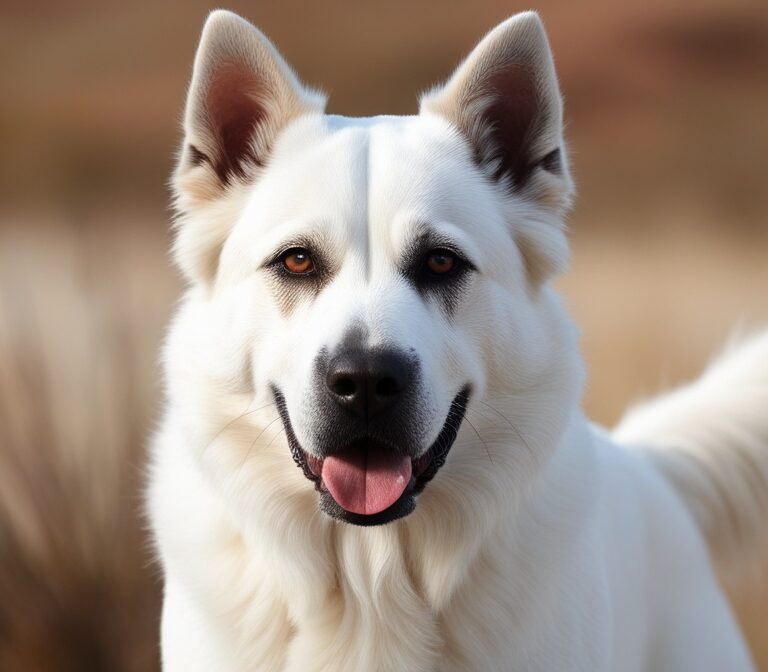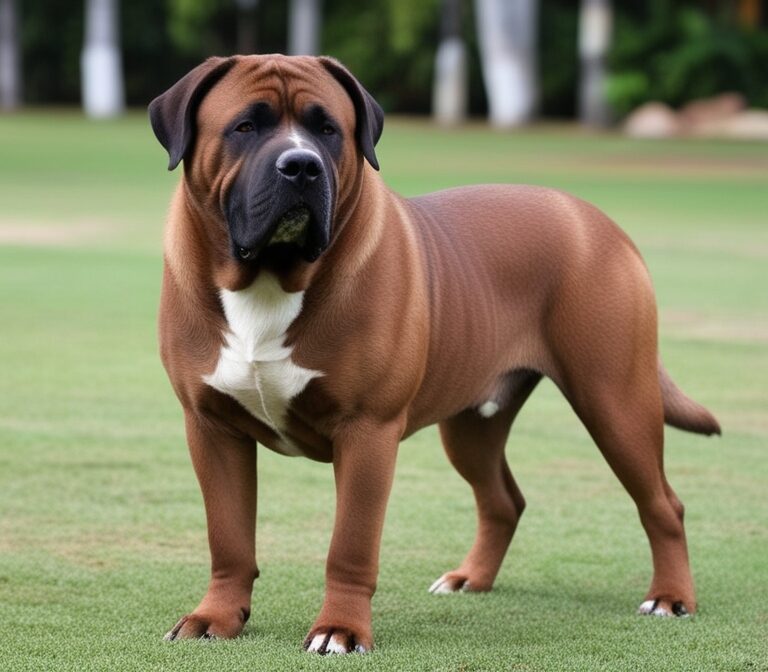Australian Shepherd: Complete Breed Guide

Overview
The Australian Shepherd, often called the Aussie, is a medium-sized herding dog celebrated for its intelligence, energy, and versatility. Despite its name, the breed was developed in the United States, where ranchers valued its ability to manage livestock with precision and stamina. Aussies stand between 18 to 23 inches tall and typically weigh 40 to 65 pounds, making them strong yet agile workers. Their double coats come in striking color patterns, most famously blue merle, red merle, black, and red, often accented with copper or white markings. One of their most unique traits is eye variation, with some having blue, brown, amber, or even two different colored eyes, known as heterochromia. Highly adaptable, Australian Shepherds thrive as both working dogs and family companions, provided their need for exercise and mental stimulation is met. They are loyal, protective, and eager to learn, making them an engaging choice for active owners.
History and origins
The Australian Shepherd’s name often causes confusion, as the breed did not originate in Australia but in the United States. Its development began in the 19th century when Basque shepherds migrated from Europe to America, bringing their working dogs with them. Many of these shepherds had spent time in Australia before arriving in the U.S., which likely explains the misleading name. Once in California and other ranching regions, American ranchers selectively bred these dogs for intelligence, endurance, and herding ability. Over time, the dogs became invaluable partners for managing sheep and cattle across vast western ranches. The breed’s agility, stamina, and trainability made it a staple in rodeos, where they gained public recognition. In 1993, the American Kennel Club officially recognized the Australian Shepherd, though it had long been a beloved working breed in ranching and farming communities. Today, Aussies remain both skilled herders and cherished companions worldwide.
Physical characteristics
The Australian Shepherd is a medium-sized, well-balanced dog with a strong and athletic build. Males generally stand between 20 and 23 inches tall at the shoulder, while females measure slightly smaller, around 18 to 21 inches. Their weight typically ranges from 40 to 65 pounds, making them sturdy yet agile enough for herding tasks. One of their most distinctive features is their coat, which is medium in length, weather-resistant, and often wavy or straight. Coat colors are highly varied and include blue merle, red merle, solid black, and solid red, often with white and copper markings. Eye color adds further uniqueness, with shades of brown, amber, or blue, and some dogs displaying heterochromia, where each eye is a different color. Another notable trait is the tail, which may be naturally bobbed or docked, depending on breeding practices. Together, these characteristics give the Aussie a striking and easily recognizable appearance.
Temperament and personality
Australian Shepherds are renowned for their intelligence, energy, and strong work ethic. Bred as herding dogs, they are naturally alert and thrive when given tasks or responsibilities. Their loyalty and protective instincts make them excellent family guardians, while their affectionate nature creates strong bonds with owners. Aussies are highly trainable, responding quickly to commands, and they excel in obedience and agility sports. However, their intelligence and energy can also lead to restlessness if they are not properly engaged. They require consistent mental stimulation and physical activity to remain happy and well-behaved. With children, they are playful and affectionate, although their herding instincts may occasionally cause them to try to “herd” young kids or other pets. Proper socialization from an early age helps ensure they are confident, friendly, and adaptable in different environments. Overall, Australian Shepherds combine loyalty with enthusiasm, making them both devoted companions and hardworking partners.
Health and lifespan
The Australian Shepherd is generally a healthy breed with a lifespan of 12 to 15 years. However, like many purebred dogs, they are predisposed to certain genetic health conditions. Common issues include hip dysplasia, a joint disorder that can cause pain and mobility problems, and epilepsy, which may result in recurring seizures. Eye conditions such as cataracts and progressive retinal atrophy are also seen in the breed. Another important concern is the MDR1 gene mutation, which makes some Aussies sensitive to specific medications, requiring careful veterinary management. Responsible breeders test for these conditions to reduce the risk of passing them on. With proper care, regular vet check-ups, and a balanced lifestyle, most Aussies remain active and healthy well into their senior years. Owners who prioritize preventive care, including vaccinations, dental hygiene, and weight management, can help extend both the quality and length of their dog’s life.
Grooming and maintenance
Australian Shepherds have a double coat designed to protect them in various weather conditions. Their outer coat is of medium length and may be straight or wavy, while the undercoat provides insulation. Regular grooming is necessary to keep their coat healthy and to manage shedding, which occurs year-round but increases during seasonal changes. Brushing two to three times per week helps prevent matting and reduces loose hair around the home. During heavy shedding seasons, daily brushing may be required. Bathing should be occasional, usually every six to eight weeks, unless the dog becomes especially dirty. Attention should also be given to ear cleaning, as Aussies can be prone to ear infections if moisture accumulates. Regular nail trimming and dental care are equally important parts of maintenance. With consistent grooming, the Australian Shepherd not only looks its best but also remains comfortable and healthy throughout the year.
Exercise needs
The Australian Shepherd is an energetic breed that requires significant daily exercise to maintain both physical health and mental well-being. Most Aussies need at least 60 to 90 minutes of vigorous activity per day, which can include running, hiking, agility training, or interactive games such as fetch. Because they were bred for herding livestock, these dogs thrive in environments where they can work or engage in structured activities. Simply walking an Aussie once a day is insufficient; without adequate stimulation, they may develop destructive behaviors such as chewing, digging, or excessive barking. Canine sports like flyball, dock diving, and rally obedience are excellent outlets for their energy. For owners living in urban areas, daily trips to dog parks or participation in agility classes can help fulfill these needs. Aussies excel when their exercise routine combines both physical exertion and mental challenges, ensuring a balanced, happy dog.
Training and intelligence
The intelligence of the Australian Shepherd makes training both rewarding and challenging. Ranked among the most intelligent dog breeds, Aussies quickly learn commands and problem-solving tasks. They respond best to positive reinforcement techniques such as praise, play, and treats, while harsh corrections may cause stress or resistance. Because of their natural desire to work, Aussies often seek tasks and responsibilities within the home, such as retrieving items or alerting family members to visitors. Early obedience training is critical to channel their energy and avoid undesirable behaviors, such as excessive herding or guarding tendencies. Advanced training opportunities, including agility, scent work, and herding trials, provide excellent mental stimulation and allow Aussies to showcase their versatility. Consistency and engagement are key; when mentally challenged, these dogs thrive and maintain a strong bond with their owners.
Socialization
Proper socialization is essential for the Australian Shepherd to develop into a well-rounded adult. Exposure to different environments, people, and other animals during puppyhood helps reduce the risk of shyness or overprotective behaviors later in life. Aussies are naturally alert and may be cautious around strangers, so introducing them to new experiences early helps ensure confidence and adaptability. Puppy socialization classes are particularly beneficial, as they combine obedience skills with safe interaction among other dogs. For families with children, early training can prevent herding behaviors, such as nipping at heels or circling. With consistent exposure to varied situations—such as car rides, parks, and busy streets—Aussies learn to manage their energy and remain calm in diverse settings. A well-socialized Australian Shepherd is both a loyal protector and a friendly, adaptable companion.
Living environment
The Australian Shepherd adapts well to various living environments but thrives best in homes with space to run and play. Ideally, they should live in rural or suburban areas with fenced yards, as their herding instincts make them prone to chasing moving objects such as cars, bicycles, or wildlife. Apartment living can be challenging unless owners commit to rigorous daily exercise routines. Mental enrichment is equally important—puzzle toys, training exercises, and interactive play help prevent boredom. Aussies should not be left alone for extended periods, as they may develop separation anxiety, leading to destructive behaviors. Owners who provide structure, physical outlets, and consistent engagement will find that Aussies adapt successfully to their environment, regardless of size.
Diet and nutrition
A balanced diet is crucial for maintaining the health and energy levels of the Australian Shepherd. Most adult Aussies require between 1,200 to 1,600 calories per day, depending on activity level, age, and metabolism. High-quality dog food rich in protein (at least 25% protein content) supports muscle maintenance and energy needs, while healthy fats aid coat and skin health. Puppies and working dogs may require higher-calorie diets, while older or less active Aussies benefit from controlled portions to avoid obesity. Owners should avoid overfeeding and provide measured meals rather than free-feeding. Foods containing omega-3 fatty acids, glucosamine, and chondroitin support joint health, which is especially important for active breeds like Aussies. Fresh water should always be available, and occasional healthy treats, such as carrots or blueberries, can serve as rewards without contributing to weight gain.
Adaptability
The Australian Shepherd is a versatile breed capable of adapting to a variety of lifestyles, but its adaptability is strongly tied to the activity level of its household. Aussies excel in rural or suburban environments where they can run freely, yet they can also adjust to city life if their exercise and mental stimulation needs are met daily. They tolerate moderate climates well due to their double coat, but may struggle in extreme heat without proper cooling and hydration. Unlike some breeds that are content with minimal activity, Aussies require a structured routine to prevent anxiety or restlessness. With adequate engagement, they adapt to homes with children, other dogs, and even cats, provided introductions are done gradually. Their adaptability makes them suitable for families, singles, or working professionals—as long as their high energy levels are consistently managed.
Working roles and jobs
Bred as a herding dog, the Australian Shepherd has long been prized for its ability to manage livestock with precision and endurance. Beyond traditional farm work, Aussies excel in modern working roles such as search and rescue, therapy dogs, service dogs, and police K9 units. Their intelligence and trainability allow them to learn complex tasks, from detecting medical conditions to guiding individuals with disabilities. In competitive environments, Aussies dominate in agility, obedience, and flyball, where their speed and focus shine. Many still work actively on ranches across the U.S., herding sheep, cattle, and other livestock with the same determination that made them invaluable in the 19th century. Their adaptability to various jobs highlights their reputation as one of the most versatile working breeds.
Australian Shepherd varieties
While the standard Australian Shepherd is the most recognized, variations of the breed have gained popularity:
- Miniature Australian Shepherd: Standing 13–18 inches tall and weighing 20–40 pounds, Minis retain the same intelligence and energy but in a smaller frame.
- Toy Australian Shepherd: Measuring under 13 inches, Toy Aussies are bred primarily as companions. They share the breed’s affectionate nature but require less space, though they still need exercise.
- Standard Australian Shepherd: The original and largest variety, standing 18–23 inches and weighing 40–65 pounds.
Each variation maintains the breed’s core traits—loyalty, intelligence, and athleticism—but owners should verify reputable breeders to avoid health issues linked to poor breeding practices.
Family suitability
Australian Shepherds make excellent family dogs for active households. Their affectionate nature and protective instincts make them loyal companions, while their playfulness ensures they bond well with children. However, because of their natural herding behavior, Aussies may attempt to “herd” kids by circling or gently nipping at heels. Early training helps minimize this instinct. With proper socialization, Aussies coexist peacefully with other pets, though they may try to establish themselves as leaders. Families should be prepared for the breed’s high energy demands, ensuring enough time is dedicated to exercise, play, and mental enrichment. In return, Aussies provide unwavering loyalty and often become an integral part of family life.
Cost of ownership
Owning an Australian Shepherd comes with financial responsibilities that extend beyond the initial purchase price. On average:
- Purchase or adoption: $300–$600 from shelters, $800–$1,800 from reputable breeders, and up to $2,500 for show-quality dogs.
- Annual food costs: $500–$800, depending on quality and portion size.
- Veterinary care: $300–$600 per year for routine checkups, plus potential costs for breed-specific health conditions.
- Training and activities: $200–$600 annually for obedience classes or agility participation.
- Grooming supplies: $100–$300 per year, as professional grooming is not always necessary.
Over a typical 12–15 year lifespan, the total cost of ownership ranges from $15,000 to $20,000, depending on lifestyle and medical needs.
Adoption and rescue
Many Australian Shepherds end up in shelters or breed-specific rescues due to their high energy and demanding nature. Potential owners who adopt often find that adult Aussies are already trained and socialized, making integration easier than starting with a puppy. Organizations such as the Australian Shepherd Rescue Association (ARSA) and local herding dog rescues specialize in rehoming Aussies across the United States. Adoption costs typically range from $200 to $500, significantly less than purchasing from a breeder. Choosing adoption not only provides a loving home to a dog in need but also supports responsible pet ownership by reducing demand for irresponsible breeding.
Common behavioral challenges
While highly intelligent and loyal, Australian Shepherds can present challenges if their needs are not met. Common issues include:
- Excessive barking: Often triggered by boredom, anxiety, or alertness to surroundings.
- Herding instincts: May lead to nipping or chasing of children and other pets.
- Separation anxiety: Results from being left alone for long periods.
- Destructive behaviors: Such as chewing, digging, or pacing, caused by lack of stimulation.
These behaviors can be mitigated through consistent training, exercise, and enrichment. Providing structured routines and engaging tasks prevents the development of undesirable habits.
Comparisons with similar breeds
The Australian Shepherd is often compared with other herding breeds, particularly the Border Collie. While both share intelligence and high energy, Border Collies tend to be more intense workers, whereas Aussies are slightly more adaptable as family companions. Compared with the German Shepherd, Aussies are smaller, more agile, and less protective, making them more approachable for novice owners. The Miniature American Shepherd, a close relative, is nearly identical in temperament but comes in a smaller package, making it better suited for apartment living. Understanding these differences helps prospective owners choose the breed that best matches their lifestyle.
Travel and adventure companion
For active individuals, the Australian Shepherd is an ideal travel and adventure companion. Their endurance makes them excellent hiking, camping, and running partners. Aussies generally enjoy car rides and adapt well to travel routines if introduced early. However, their herding instincts mean they must remain leashed or in secure areas, as they may chase wildlife. With proper training, they can accompany owners on off-leash adventures in safe, designated areas. Many Aussies excel in dog-friendly sports like trail running and paddleboarding, reinforcing their reputation as versatile, adventurous companions.
Coat colors and patterns
The Australian Shepherd is well known for its striking variety of coat colors and patterns. The four recognized base colors are:
- Blue merle: A mottled gray and black pattern, often with white and copper markings.
- Red merle: A similar marbled look in red shades, ranging from light copper to dark liver.
- Black: Solid black coats, sometimes accented with white or copper points.
- Red: Solid red coats, from light cinnamon to deep mahogany.
Markings can include white blazes, collars, socks, and copper points. The diversity in coat appearance means no two Aussies look exactly alike. Merle coats are particularly distinctive but must be bred responsibly, as pairing two merle-patterned dogs increases the risk of deafness or blindness in puppies.
Eye variations and heterochromia
One of the Australian Shepherd’s most unique features is its eye variation. Aussies may have blue, brown, hazel, amber, or green eyes, and heterochromia (two differently colored eyes) is relatively common. Some even display sectoral heterochromia, where a single eye contains multiple colors. These variations add to the breed’s charm but also stem from the genetic diversity tied to merle coats. Eye exams are recommended during puppyhood to check for conditions such as collie eye anomaly or cataracts.
Puppy care and development
Raising an Australian Shepherd puppy requires patience, structure, and early training. During the first 8–16 weeks, socialization is critical—exposing the puppy to new environments, people, and animals. Aussies are quick learners and benefit from early obedience classes to instill good habits. Puppies typically eat three to four meals per day, with high-quality food designed for large, active breeds. Crate training and consistent schedules help prevent destructive behaviors. Because of their high energy, Aussie puppies may nip, chew, or attempt to herd family members; redirection and positive reinforcement ensure these instincts are properly managed.
Senior Australian Shepherd care
As Australian Shepherds age, their needs change significantly. Senior Aussies, generally considered 7 years and older, often require fewer calories but still benefit from diets rich in joint-supporting supplements like glucosamine and omega-3 fatty acids. Daily walks remain essential, but intensity should decrease to protect joints. Regular veterinary exams help monitor for conditions such as arthritis, cataracts, and heart disease. Mental stimulation—through puzzle toys, gentle training sessions, and new experiences—remains important for keeping seniors sharp and engaged. With proper care, many Aussies remain active well into their teens.
Australian Shepherd in pop culture
The Australian Shepherd has gained widespread popularity in television, film, and sports. The breed became famous in rodeo performances during the 1950s and 1960s, often performing tricks and herding demonstrations. Aussies have since appeared in movies, commercials, and dog sports broadcasts, further boosting their reputation as intelligent and athletic dogs. Their distinctive looks and trainability make them a favorite among performers and competitors. The breed’s popularity surged even more after recognition by the American Kennel Club (AKC) in 1993.
Breed clubs and recognition
The Australian Shepherd Club of America (ASCA), founded in 1957, is the largest single-breed club in the United States. It played a key role in standardizing the breed before the AKC officially recognized the Australian Shepherd in 1993. Today, Aussies are recognized by major kennel clubs worldwide, including the United Kennel Club (UKC) and the Fédération Cynologique Internationale (FCI). Breed clubs promote responsible breeding, host competitions, and provide resources for owners to ensure the health and preservation of the breed.
Travel and relocation tips
Traveling with an Australian Shepherd requires preparation due to their energy and alertness. Crate training is essential for safe car or air travel. Aussies should be exercised before long trips to minimize restlessness. During moves or relocations, maintaining familiar routines, toys, and bedding helps reduce stress. Because Aussies are prone to separation anxiety, keeping them close and engaged during travel ensures smoother adjustments. For international travel, owners must research breed-specific import regulations, vaccinations, and quarantine requirements.
Best activities and games for Aussies
To satisfy both physical and mental needs, Australian Shepherds thrive with interactive activities. Popular choices include:
- Agility courses: Building obstacle courses enhances focus and physical stamina.
- Herding games: Using balls or herding trials channels their natural instincts.
- Fetch and frisbee: Their speed and athleticism make them excellent catch players.
- Puzzle feeders: Mental stimulation through problem-solving helps prevent boredom.
- Trick training: Aussies excel at advanced tricks, from retrieving objects to performing choreographed routines.
Incorporating variety ensures Aussies remain challenged and fulfilled.
Responsible breeding and genetic testing
Because the Australian Shepherd is prone to certain genetic health conditions, responsible breeding is essential. Reputable breeders conduct health screenings for hip dysplasia, elbow dysplasia, MDR1 gene mutation, progressive retinal atrophy, and epilepsy. Breeding two merle-patterned Aussies is discouraged due to the risk of deafness and blindness in offspring. Buyers should request documentation of genetic testing and avoid breeders who prioritize appearance over health. Responsible practices preserve the breed’s well-being and maintain its long-term vitality.
Tips for first-time Aussie owners
First-time owners considering an Australian Shepherd should prepare for a high-energy, intelligent, and demanding dog. Key considerations include:
- Committing to at least 1–2 hours of daily exercise.
- Providing structured training and mental enrichment.
- Socializing puppies early to prevent shyness or overprotectiveness.
- Ensuring secure fencing, as Aussies are skilled escape artists.
- Being ready for grooming needs and seasonal shedding.
Owners who meet these demands are rewarded with a loyal, affectionate, and highly trainable companion.
Climate tolerance of Australian Shepherds
The Australian Shepherd is naturally equipped with a dense double coat that provides insulation against both heat and cold, making it a highly adaptable breed across various climates. However, while Aussies tolerate moderate seasonal changes well, they do best in environments where extreme weather conditions are carefully managed by owners. In hot climates, their thick coat can predispose them to overheating, so they should always have access to shade, fresh water, and exercise scheduled during cooler hours of the day. In colder regions, their undercoat acts as insulation, allowing them to remain active in snow or chilly weather, though frostbite risks on ears and paws remain. Unlike short-haired breeds, Aussies should never have their coats shaved, as this can damage natural temperature regulation. With proper grooming, hydration, and controlled outdoor activity, the Australian Shepherd can thrive in nearly any climate while staying comfortable and healthy.
Communication and body language
The communication style of the Australian Shepherd is a fascinating aspect of its behavior, as the breed uses a combination of body language, vocalization, and eye contact to express emotions and intentions. Aussies are highly observant dogs that often communicate through subtle cues, such as tail position, ear movement, and direct gazes. A wagging tail paired with alert ears signals excitement or anticipation, while pacing or barking may indicate anxiety or boredom. Their vocal range includes playful barks, alert barks to signal strangers, and occasional howls when seeking attention. Unlike some quieter breeds, Aussies are more expressive and thrive in households that engage with them consistently. Because of their herding background, they may also use eye contact and circling motions to direct people or other pets. Owners who learn to read these signals gain a deeper bond with their Aussie and can more effectively meet its needs for interaction, reassurance, and guidance.
Popularity and demand worldwide
Over the past three decades, the Australian Shepherd has become one of the most sought-after breeds globally, admired for its intelligence, versatility, and striking appearance. Originally bred as a working dog in the United States, the Aussie quickly gained recognition in dog sports, rodeo performances, and competitive obedience. Its official recognition by the American Kennel Club in 1993 further boosted its visibility, leading to a steady rise in popularity across North America, Europe, and Australia. Today, the breed consistently ranks within the top 15 most popular dog breeds in the United States, according to AKC data. The demand for Australian Shepherds has also grown internationally, with many families seeking them as both loyal companions and performance dogs in agility, herding trials, and canine athletics. Their widespread appeal reflects not only their working heritage but also their adaptability as affectionate, family-oriented pets that thrive in active households worldwide.
Conclusion
The Australian Shepherd is a remarkable breed that combines intelligence, athleticism, and loyalty. Originating in the United States, the Aussie has become one of the most versatile working and companion dogs worldwide. With proper training, exercise, and care, this breed thrives in active households and excels in diverse roles—from herding livestock to performing in agility sports or serving as therapy dogs. While not the right fit for every lifestyle, Australian Shepherds reward dedicated owners with unwavering companionship, boundless energy, and a personality as vibrant as their coat colors.





